Paris, 1925. The International Exhibition of Decorative Arts and Modern Industries unveiled a revolutionary aesthetic language to the world. Gone were the vegetal curves of Art Nouveau, replaced by geometric lines, precious materials, and assumed modernity. Art Deco was born, carrying the optimism of an era fascinated by speed, technological progress, and urban elegance.
Art Deco Style: Origins and Influences
This movement, born on the banks of the Seine, would conquer the entire world, from New York to Shanghai, via London and Buenos Aires. More than a simple decorative style, Art Deco embodied the spirit of a pivotal era, the Roaring Twenties, when Europe emerged from the Great War with an insatiable thirst for beauty and refinement. But this planetary conquest would profoundly transform the original French style, giving birth to local interpretations of unsuspected richness.
What is Art Deco
Art Deco emerged as a bold reaction and synthesis. It succeeded Art Nouveau with its supple and floral lines, while coexisting with the first modernist impulses like the Bauhaus. More geometric, more assertive, it established itself as the style of luxury and elegance in the interwar period.
Its appeal lies in this fascinating paradox: being both decorative and rational, rooted in French artisanal tradition and open to industrial modernity. This duality makes Art Deco a unique movement in the history of decorative arts, capable of reconciling the technical excellence inherited from French master cabinetmakers and the geometric aesthetic of the nascent industrial era.
Art Deco flourished between 1910 and 1940, with its peak around the International Exhibition of Decorative and Modern Industrial Arts in Paris in 1925. This Parisian event constitutes the official birth certificate of the movement, celebrating French genius in decorative arts. From this Parisian matrix, the style would radiate toward Europe, the United States, Latin America, and as far as Asia, metamorphosing through contact with local cultures.
Why does this style matter today? Because it embodied a timeless aesthetic, where geometric rigor combines with the richness of materials. It remains one of the most sought-after styles in exceptional French furniture, architecture, and fashion, testimony to an era when art and industry found their perfect balance.
Historical & Cultural Context
In the 1910s, Europe underwent radical transformation. World War I disrupted society, but the postwar period opened an unprecedented period of creative euphoria: the Roaring Twenties. French Art Deco perfectly reflected this contrasted context: a thirst for modernity mixed with a desire for accessible luxury, and the will to demonstrate French craftsmanship in the face of global industrialization and German and American competition.
This artistic renaissance drew its strength from multiple and exotic influences. Diaghilev’s Ballets Russes revealed the fabulous Orient as early as 1909, with their flamboyant sets designed by Bakst and Benois. Cubism revolutionized the perception of forms, bringing this geometrization that would characterize the movement. Egyptomania, born after the discovery of Tutankhamun’s tomb in 1922, inspired hieratic motifs and sumptuous colors. African and Asian arts, revealed by ethnographic expeditions and colonial exhibitions, nourished the decorative imagination of creators seeking novelty.
This era also saw the birth of a new clientele: the bourgeoisie enriched by the war effort aspired to a refined art of living, while industrialization enabled the production of decorative objects on a larger scale. French Art Deco perfectly met this demand, proposing a modern but accessible style, luxurious without being ostentatious, deeply rooted in the tradition of Parisian luxury.
Art Deco thus translated the spirit of an era: modern yet refined, international yet profoundly French, industrial yet artisanal. This unique synthesis explains its rapid diffusion and capacity to adapt to the most varied cultural contexts.
Aesthetic Characteristics
Art Deco is immediately recognizable by its codified formal vocabulary. Rigorous symmetry, strict geometry, Babylonian ziggurats, dynamic chevrons, stylized sunbursts structure compositions and volumes. These repetitive motifs create a striking visual rhythm, distinctive signature of the style that definitively breaks with Art Nouveau arabesques.
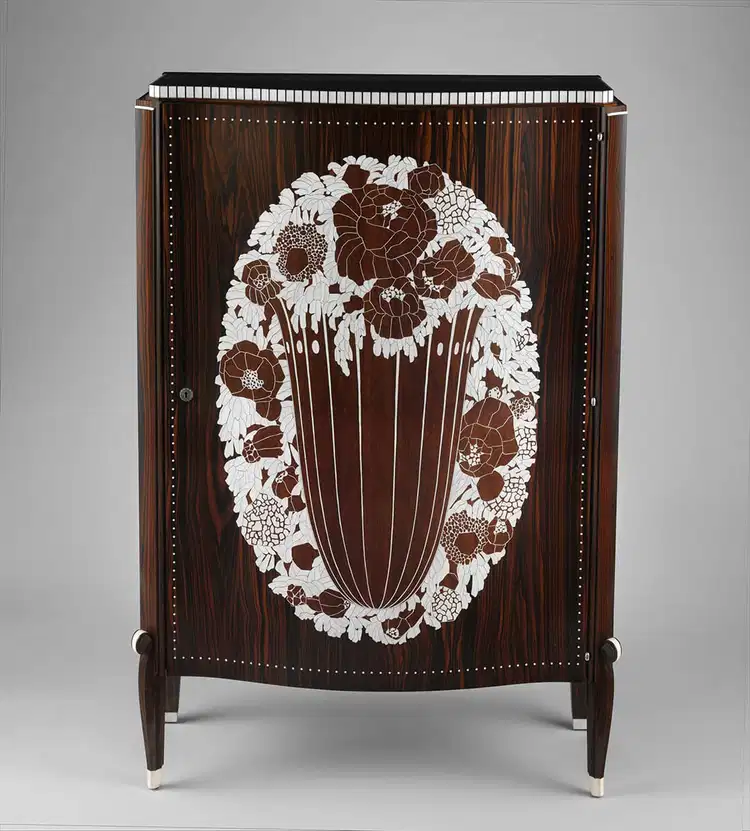
The straight line dominates, declined in characteristic motifs: the famous tiers inspired by pre-Columbian architecture, geometric spirals, fan compositions evoking Egyptian Art. This systematic geometrization applies to floral motifs, transformed into abstract rosettes, as well as to human figures, stylized to become pure plays of volumes.
Color Palette and Materials
The chromatic palette skillfully oscillates between refined sobriety and striking contrasts. Deep black, pearly ivory, shimmering gold form the noble triad, enhanced by vermilion red, cobalt blue, or emerald green. These pure colors, applied in frank flat tints, break with the pastel nuances of the previous era and assert an assumed chromatic modernity.
French Art Deco revolutionized the use of materials by combining tradition and innovation with particular genius. Exotic woods like Macassar ebony or Rio rosewood coexist with brilliant lacquers, precious marquetry, and ivory inlays. Engraved glass, polished chrome, stainless steel bring their industrial modernity. This alliance of artisanal refinement and nascent industry characterizes the revolutionary spirit of the Parisian movement.
Techniques reached remarkable virtuosity: expert use of veneer, mastery of Oriental lacquers adapted to Western tastes, art ironwork with geometric motifs, wood carving with stylized reliefs, molded or engraved glass with sophisticated material effects. The workshops of Ruhlmann, Lalique, or Sue and Mare competed in technical innovation and aesthetic excellence, establishing the standards of French luxury.
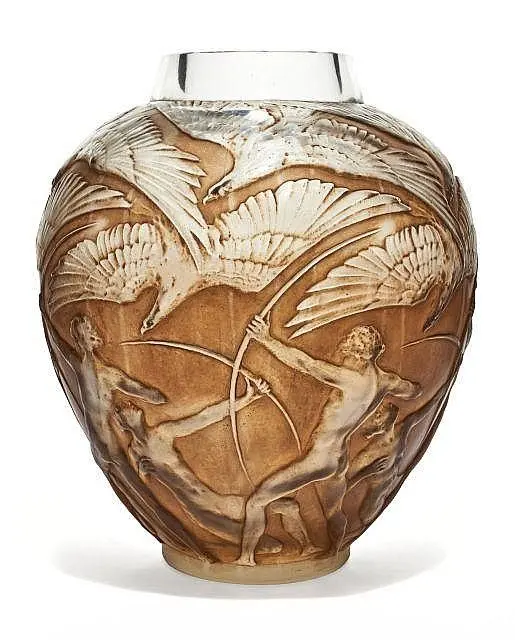
French Art Deco: Birth of a National Style
Parisian Masters
French Art Deco was born in the most prestigious Parisian workshops, carrying a clear ambition: to assert French supremacy in decorative arts in the face of rising German and American industry. This nationalist dimension, rarely mentioned, explains the insistence on artisanal excellence and the use of precious materials.
Jacques-Émile Ruhlmann perfectly embodied this French spirit. Nicknamed the “Riesener of the 20th century,” he elevated Art Deco furniture to the rank of decorative haute couture. His pieces in precious woods, with pure and sumptuous lines, combined technical perfection and aesthetic sophistication with unequaled mastery. Ruhlmann mastered the art of refinement: his chests and tables with taut lines revealed the beauty of precious essences in their simplest expression. His creations, of extreme refinement, established the codes of contemporary luxury furniture.
Jean Dunand, master of lacquers and hammered metal, represented the perfect synthesis between East and West. He combined Far Eastern tradition and French geometric modernity with exceptional visionary genius. His monumental panels adorned the SS Normandie, floating showcase of French luxury. From the first-class salon to the smoking rooms, Dunand transformed interior architecture into a permanent decorative spectacle.
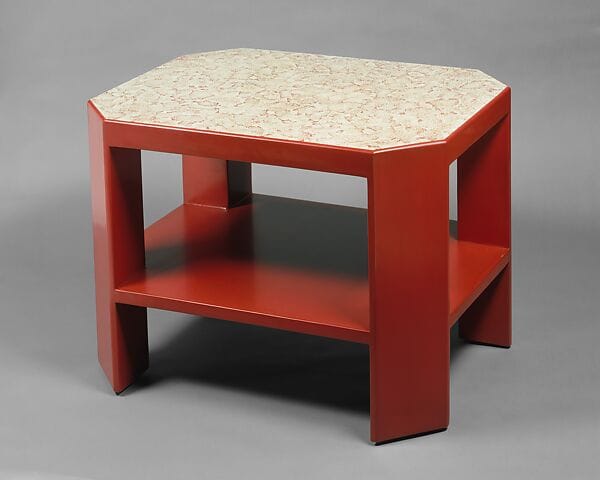
René Lalique, glass-making genius, made his transition from Art Nouveau to Art Deco with spectacular ease. His creations for the great Parisian perfume houses – Coty, Guerlain, Worth – democratized luxury while maintaining technical excellence. Lalique invented the concept of French industrial luxury, producing in series without sacrificing aesthetic quality.
French Style: Refinement and Preciosity
French Art Deco is characterized by an absolute pursuit of refinement and preciosity. Unlike later interpretations, the Parisian style favored noble materials, impeccable finishes, and a certain decorative restraint. Geometry remained in service of elegance, never spectacular for its own sake.
This approach manifested in harmonious proportions, perfect balance of volumes, and exceptional quality of execution. French creators cultivated a form of discreet luxury, immediately recognizable by connoisseurs but never ostentatious. This relative sobriety fundamentally distinguished French Art Deco from its international variations.
Paul Poiret, visionary couturier, extended this aesthetic to fashion and textiles. Through his creations with geometric motifs and bold colors, he participated in the overall aesthetic of the style far beyond clothing. Poiret embodied this typically French holistic vision: simultaneously transforming fashion, decoration, and art of living according to the same aesthetic principles.
Eileen Gray, singular and avant-garde figure, brought a more minimalist and functional dimension. Her furniture in black lacquer and chromed steel, like the famous E-1027 adjustable table, announced the style’s evolution toward modernism while preserving French technical excellence.
International Art Deco: Metamorphoses of a Style
American Interpretation: Gigantism and Optimism
Art Deco crossed the Atlantic in the early 1920s and underwent spectacular transformation on American soil. The refined and precious French style became monumental and demonstrative in New York. Americans retained the deco geometry but applied it to an unprecedented architectural scale.
The Chrysler Building (1930) and Empire State Building (1931) embodied this American reinterpretation. Their slender silhouettes, their metallic decorations inspired by the automotive industry, and their successive setbacks created a vertiginous vertical aesthetic, unimaginable in the Parisian context. American Art Deco celebrated speed, industrial power, and the capitalist optimism of the Roaring Twenties.
This American version favored stainless steel, aluminum, and chrome rather than French precious woods. Industrial materials became noble through their treatment, scale, and technical audacity. Miami developed its own tropical deco style, with pastel colors and nautical motifs, a climatic and cultural adaptation of the Parisian vocabulary.
British Art Deco: Sobriety and Tradition
London developed a more sober and classic interpretation of the movement. Influenced by the Arts and Crafts movement and a certain mistrust of excessive ornamentation, British Art Deco cultivated restraint and favored indigenous woods.
Creators like Gordon Russell or Betty Joel developed furniture with refined lines, devoid of French exuberance. This more austere approach reflected the British temperament and already announced the postwar Scandinavian design. The Hoover Building in London illustrated this domesticated version of the style, elegant but never flamboyant.
Scandinavian School: Decorative Functionalism
Nordic countries developed their own reading of Art Deco, fusing French geometric codes with their tradition of functional simplicity. Scandinavian designers retained the geometry and modernity of the style while favoring local materials – birch, pine, granite – and a more neutral chromatic palette.
This Nordic synthesis, particularly visible in Finnish and Swedish creations of the 1930s, prefigured modern Scandinavian design. Ornamentation was reduced to essentials, form followed function, but reference to deco codes remained readable in the geometry of volumes.
Italy: Theatricality and Exuberance
Fascist Italy developed a particularly theatrical version of Art Deco, mixing references to ancient Rome and geometric modernity. Gio Ponti and Piero Portaluppi cultivated an opulent decorative style, with vivid colors and exuberant forms that contrasted with French sobriety.
The train stations, courthouses, and residential buildings of Mussolini’s Italy adopted a deco monumentality that served the regime’s political project. This political instrumentalization of the style, also visible in Nazi Germany with a more austere interpretation, testified to its capacity to adapt to varied ideological contexts.
Latin America: Exoticism and Color
Brazil, Argentina, and Mexico enthusiastically embraced Art Deco, creating colorful and exuberant versions that integrated references to pre-Columbian cultures. Rio de Janeiro was covered with deco facades in pastel hues, while Buenos Aires developed an architectural style that mixed French and Spanish influences.
This Latin American version of the style favored polychromy, stylized tropical motifs, and a certain decorative exuberance foreign to Parisian restraint. Local materials – Brazilian granite, exotic woods – enriched the style’s palette.
Asia: East-West Syncretism
Shanghai developed in the 1930s a spectacular version of Art Deco that fused Western influences and Chinese tradition. The buildings of the Bund testified to this unique synthesis, where deco geometry met pagoda roofs and traditional Chinese motifs.
British India also adapted the style, creating cinemas and office buildings where geometric modernity coexisted with references to Mughal architecture. This capacity of the style to integrate local elements while maintaining its readability testified to its remarkable plasticity.
French Art Deco Architecture
Théâtre des Champs-Élysées, Paris
Designed by Auguste Perret and decorated by Bourdelle and Maurice Denis, this building constitutes a fundamental milestone in the transition from Art Nouveau to Art Deco. Its reinforced concrete structure, refined lines, and geometric decorations prefigured the movement’s aesthetic with remarkable prescience. This pioneering achievement lastingly influenced French architecture by demonstrating the expressive possibilities of reinforced concrete associated with a modern decorative vocabulary.
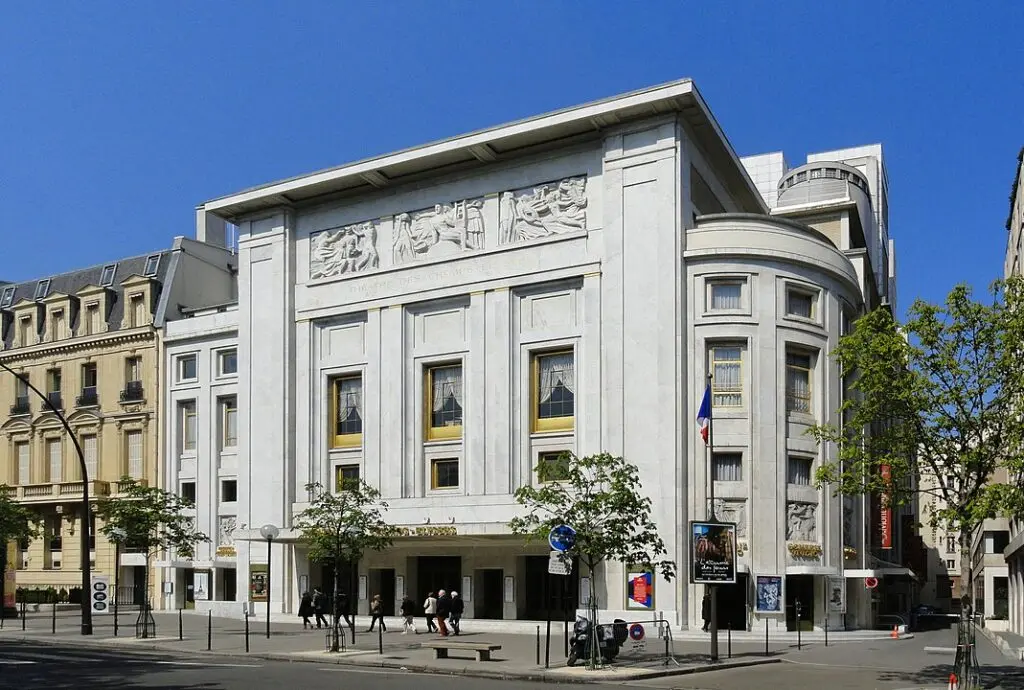
Palais de Chaillot, Paris
Erected for the 1937 International Exhibition, this monument illustrated the sober monumentality of French Art Deco in its institutional dimension. Its geometric volumes, stylized bas-reliefs, and majestic perspective embodied republican decorative grandeur. The building testified to the successful adaptation of the style to institutional programs and public art, demonstrating its architectural versatility in service of national representation.
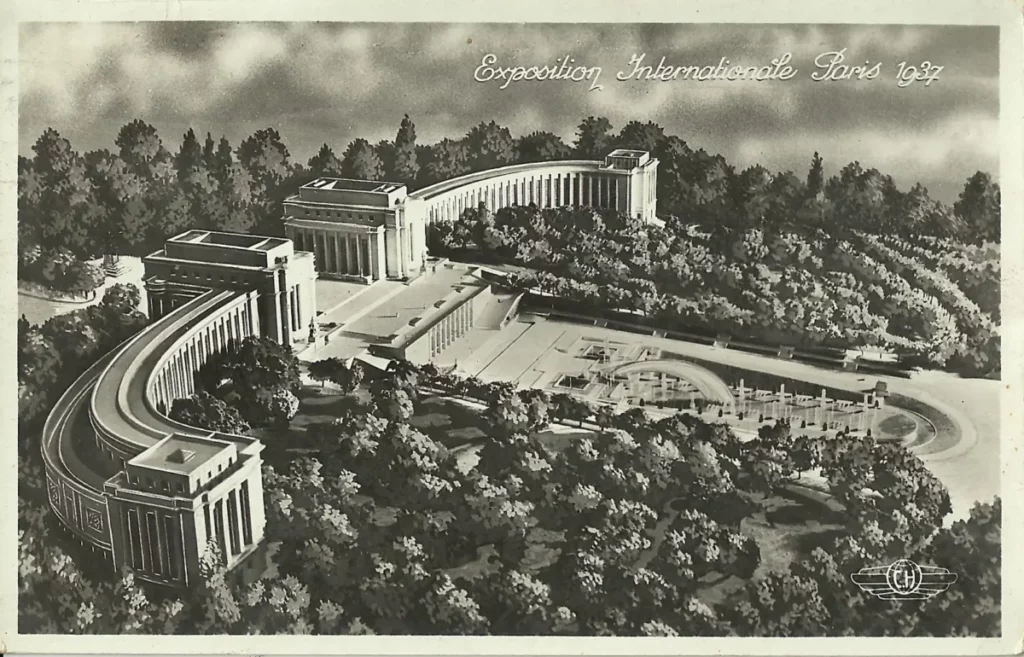
Art Deco Style Furniture & Objects
Ruhlmann’s Chest of Drawers
Sumptuous ebony veneer, sober and sculptural lines, refined bronzes with gilded patinas. This chest of drawers embodied the excellence of luxury Art Deco furniture, perfect alliance between cabinetmaking tradition and geometric modernity. Every detail testified to the technical virtuosity and aesthetic demands of the Parisian master, establishing the canons of prestige furniture for decades to come.
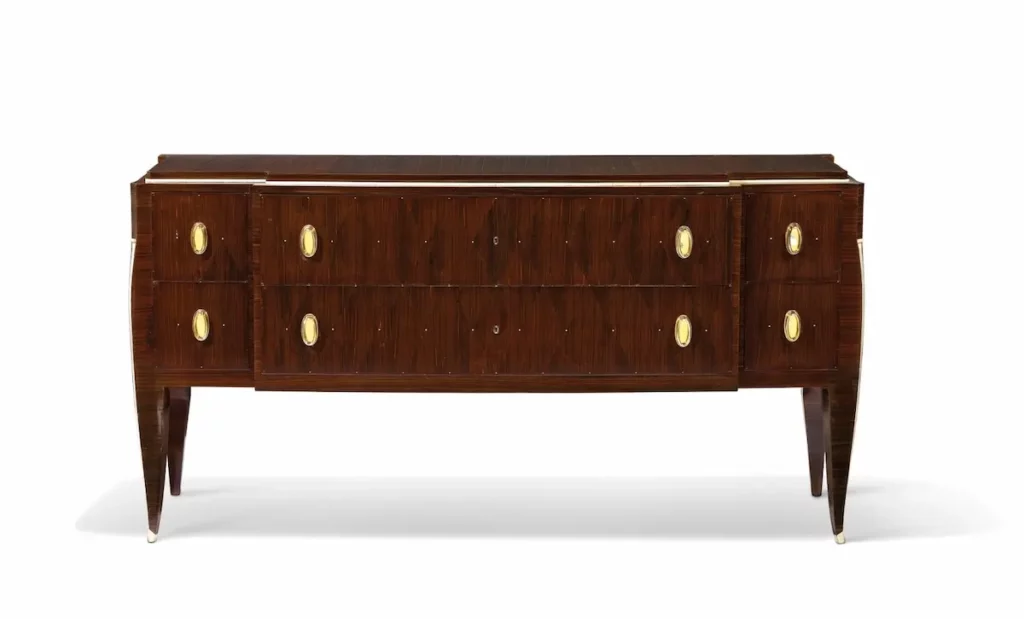
Jean Dunand’s Lacquered Panels
These monumental works combined millennial Asian tradition and modern Western geometry with unequaled sophistication. Their brilliant surfaces reflected light while revealing stylized motifs of extraordinary complexity. From the SS Normandie to Parisian private residences, these panels transformed interior architecture into a permanent decorative spectacle, showcase of French luxury.
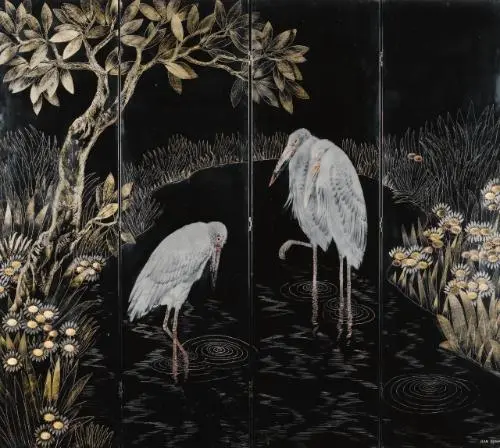
Lalique Lamps and Vases
Decorative objects diffusing soft and subdued light, these creations revealed stylized motifs of nature and animals treated according to the characteristic geometric aesthetic. The molded glass technique allowed broader production without sacrificing aesthetic quality, a major industrial revolution of the era. These pieces democratized glass art while maintaining the excellence of French design, exported worldwide.
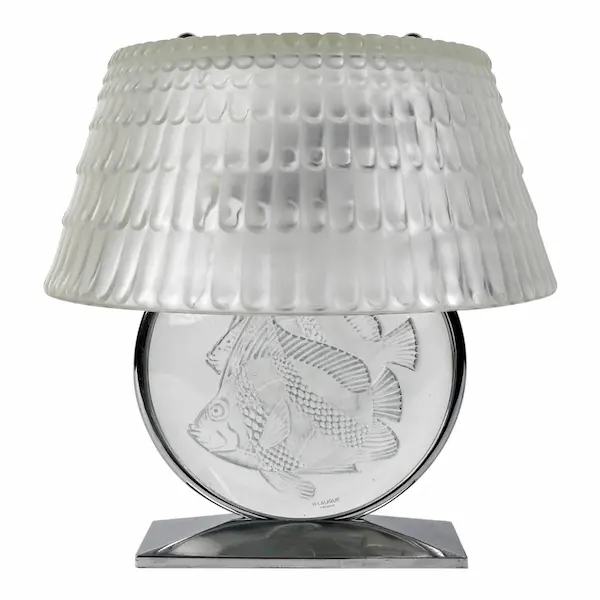
Paul Poiret’s Textiles
Fabrics with geometric motifs, exotic or stylized florals, intended for haute couture as well as furnishing. These textile creations spread the Art Deco aesthetic throughout Parisian art of living, from fashion to domestic interiors. Their influence endures in contemporary collections of great French houses, testimony to their lasting modernity.
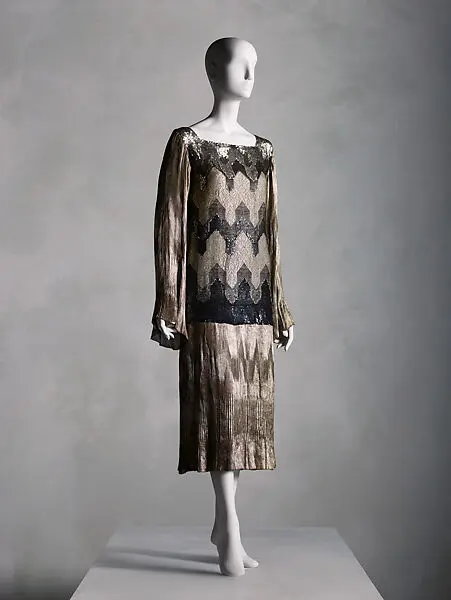
Eileen Gray’s Transat Chair
Revolutionary alliance of leather, wood, and chromed steel, this seat already announced the international modernity of the following decades. Its refined lines, tubular structure, and optimal comfort testified to a functionalist approach to design that influenced furniture evolution toward more simplicity and efficiency, while preserving French execution quality.
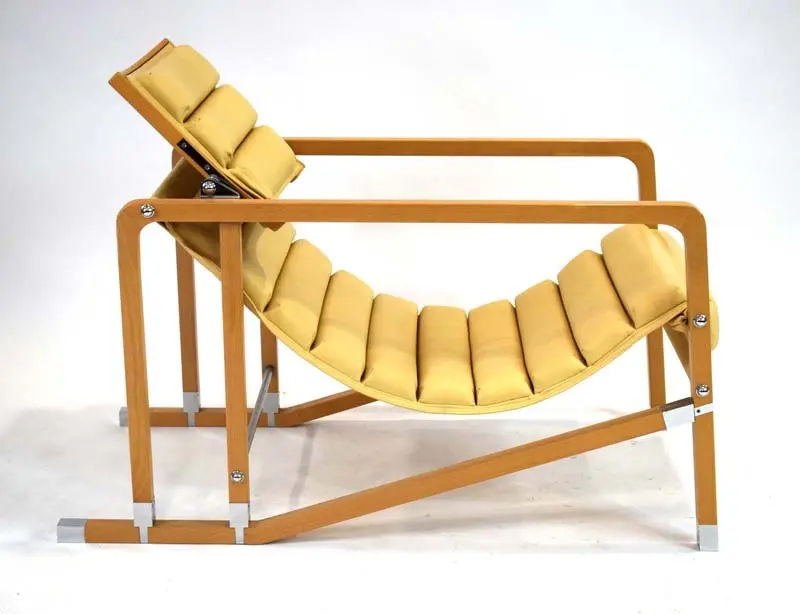
Legacy & Reinterpretations
Art Deco lastingly influenced 20th-century design and architecture by opening the way to a truly international aesthetic. The original French style, by spreading and transforming, created a common language that transcended cultural boundaries. It announced 1930-1950s modernism while preserving a decorative dimension that pure functionalism would temporarily reject.
This planetary diffusion generated national schools that enriched the initial vocabulary: American exuberance, British sobriety, Scandinavian functionality, and Italian theatricality constituted as many variations on the original French theme. This capacity for adaptation explains its remarkable durability.
Today, this style is experiencing a remarkable renaissance in all domains of contemporary luxury. It is reinterpreted by great luxury houses, in prestigious hospitality, exceptional jewelry, and high-end furniture. Creators like Pierre Frey reissue authentic Art Deco fabrics, while prestigious Parisian hotels – the Lutetia, the Molitor – cultivate this chic and timeless spirit after spectacular restorations.
Parisian decoration houses regularly draw from this aesthetic repertoire, adapting deco codes to contemporary lifestyles. This influence is particularly felt in the use of noble materials, the geometrization of forms, and the search for an assumed but refined luxury. Contemporary creators revisit the codes using digital manufacturing techniques while respecting the original spirit.
This durability is explained by the lasting modernity of the style: its pure geometry transcends fashions, its noble materials defy time, its refinement responds to contemporary expectations of authentic luxury. Art Deco thus remains an essential reference for those seeking to combine elegance and modernity in a harmonious synthesis, whether French or international.
Current Market
Valuation and Investment
Current Market
Valuation and Investment
The Art Deco market is experiencing exceptional vitality that testifies to its definitive artistic recognition. Original French pieces largely dominate sales, regularly establishing records. Ruhlmann-signed furniture reaches several hundred thousand euros at Christie’s or Sotheby’s, international references of the decorative art market.
Lalique glassware is traded between 1,000 and 50,000 euros depending on their rarity and condition. Jean Dunand’s lacquers can exceed one million euros for exceptional monumental panels. These prices testify to the artistic recognition and increasing rarity of these works, transformed into true heritage investments.
International creations, although less valued than French originals, are also experiencing growing interest. American furniture from the 1930s, British period pieces, and even certain Italian creations find their collectors. This market diversification reflects the progressive recognition of different national schools.
New Purchases and Reissues
Reissues and creations inspired by Art Deco are found in the catalogs of international high-end publishers. A table inspired by Ruhlmann can exceed 20,000 euros, testimony to the complexity of its artisanal realization. Lalique-style lighting fixtures range between 2,000 and 10,000 euros depending on their technical and decorative sophistication.
Specialized galleries like Vallois in Paris or Modernism in London offer both authentic pieces and museum-quality reissues. These spaces of excellence perpetuate the spirit of the movement by selecting contemporary creators and historical pieces according to original aesthetic criteria, guaranteeing the authenticity of both French and international heritage.
Private collectors and museum institutions compete for the masterpieces of this period. The Musée des Arts Décoratifs in Paris houses one of the finest world collections of French pieces, while the Metropolitan Museum of Art in New York regularly presents thematic exhibitions.
Conclusion
Art Deco embodies the perfect alliance of modernity and luxury, of geometric rigor and material opulence. What strikes about this movement is its unique capacity to become truly planetary while generating national interpretations of unsuspected richness.
This trajectory – from Parisian refinement to New York monumentality, from London sobriety to Latin American exuberance, from Scandinavian functionality to Italian theatricality – testifies to exceptional aesthetic plasticity. Far from being a uniform style imposed from a center, Art Deco reveals itself as a common language that each culture appropriates, transforms, and enriches according to its own genius.
This permanent metamorphosis perhaps constitutes the movement’s greatest achievement. Unlike previous styles, essentially European, Art Deco became the first truly global aesthetic movement in history. A Shanghai skyscraper dialogues with a Buenos Aires building, a Bombay cinema responds to a Miami hotel, all speaking the same geometric language while asserting their distinct cultural identities.
A century after its birth, Art Deco continues to fascinate precisely through this universality that does not uniformize. It proves that a formal vocabulary can cross continents and cultures without becoming mere mechanical reproduction. Each city, each country has developed its own version of the style, creating a diversity that considerably enriches world heritage.
This durability reveals a profound truth: Art Deco demonstrated that innovation and beauty are not opposed, that modernity and cultural identity can coexist harmoniously. Its message still resonates in our globalized era: aesthetic excellence can be both universal and singular, modern and rooted, industrial and artisanal. This paradoxical synthesis remains the lasting foundation of all authentic creation, wherever it is born.
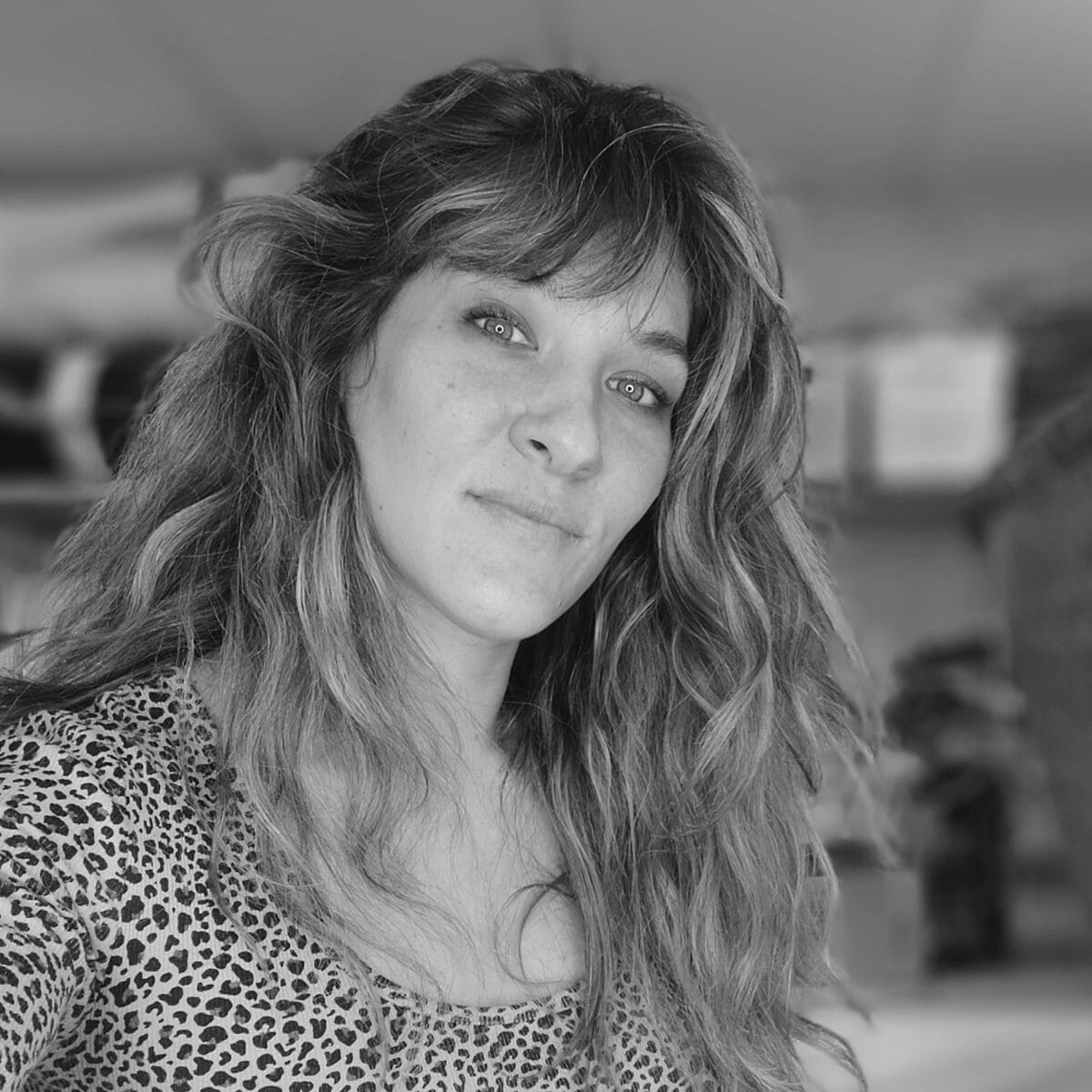
Digital entrepreneur and craft artisan, I use my unconventional background to share my vision of luxury design and interior decoration — one enriched by craftsmanship, history, and contemporary creation. Since 2012, I have been working daily in my workshop on the shores of Lake Annecy, creating bespoke interiors for discerning decorators and private clients.
